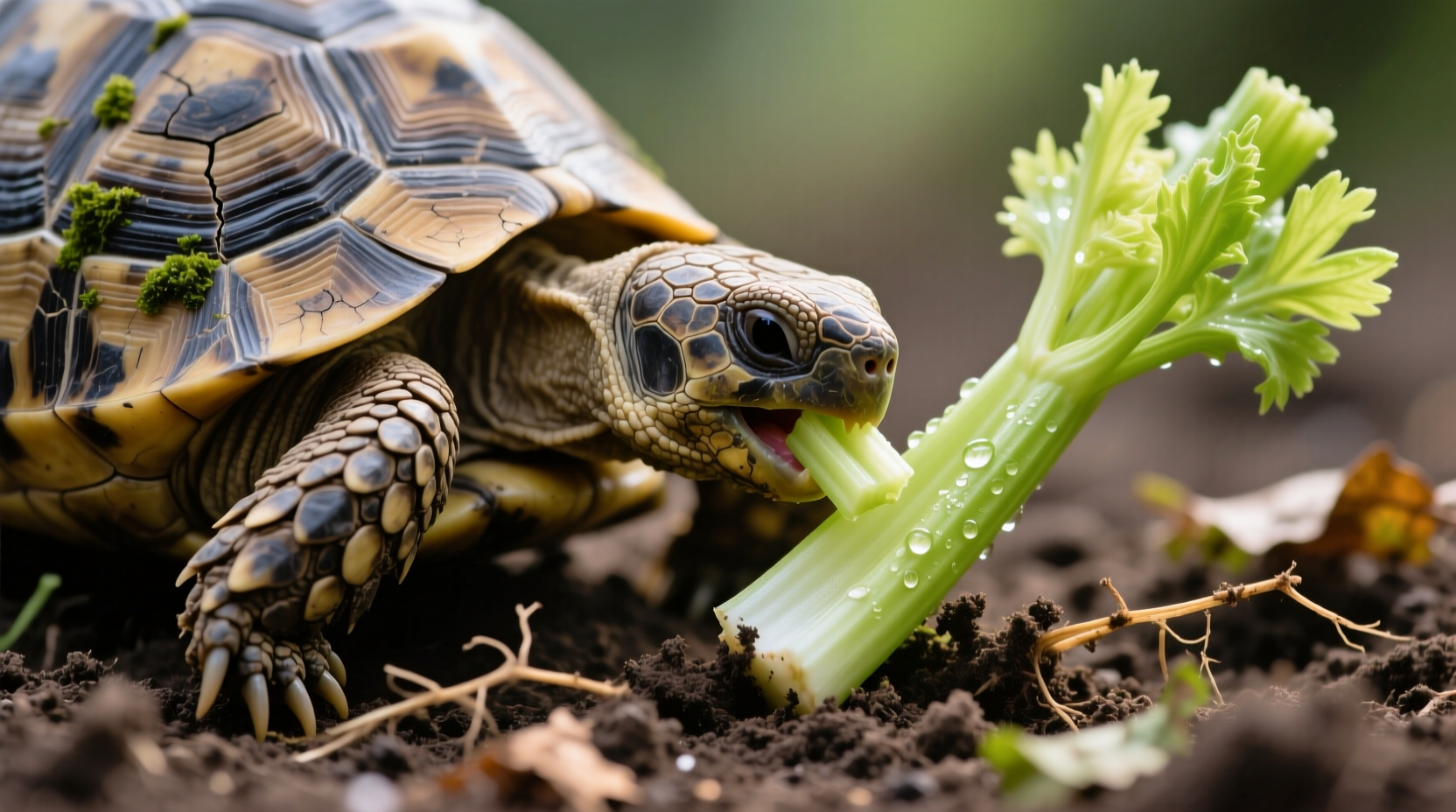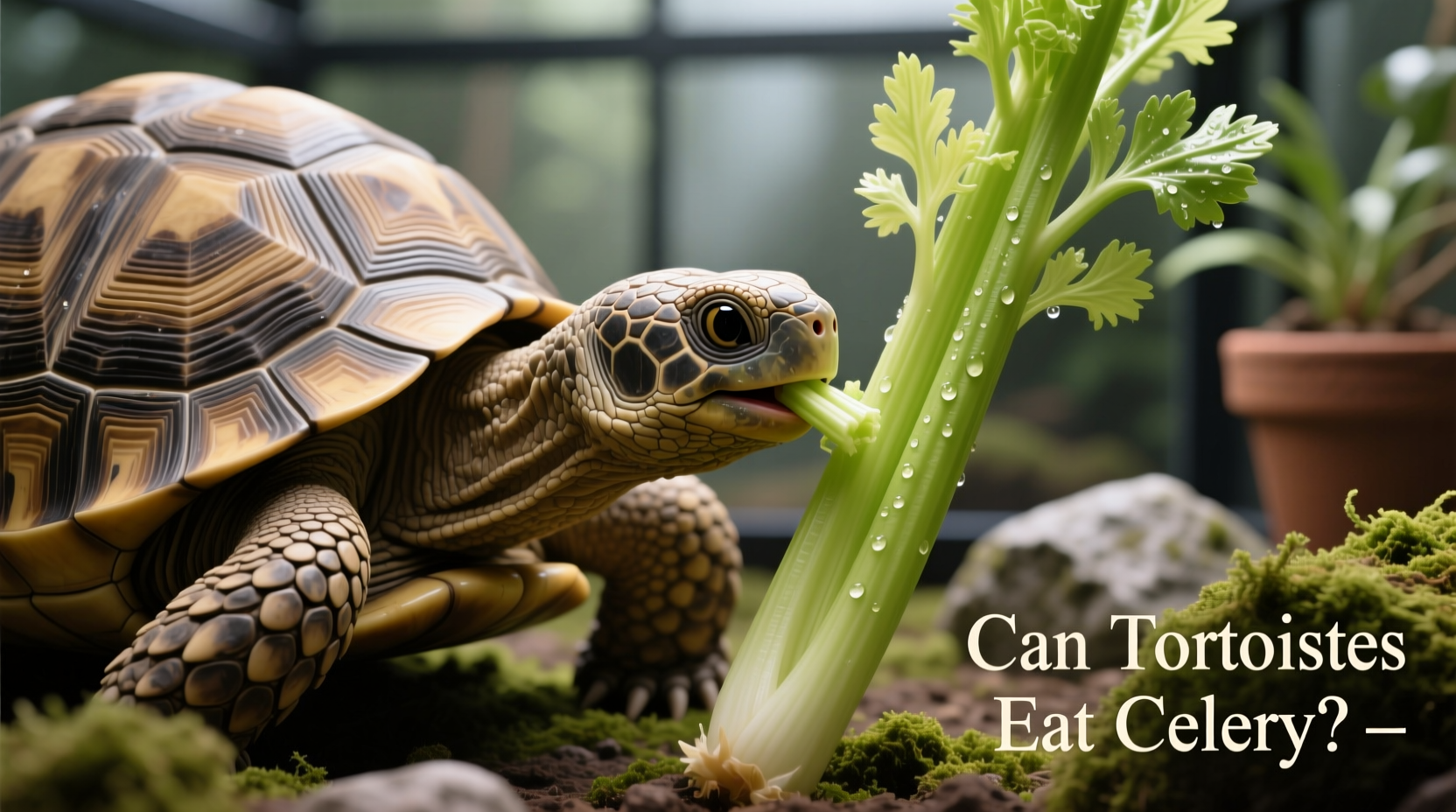Yes, tortoises can safely eat celery in moderation as an occasional treat, but it should never form a significant part of their diet due to its low nutritional density and high water content. The stringy fibers pose digestion challenges, and excessive consumption may lead to nutritional imbalances in herbivorous reptiles.
As a tortoise owner, you've probably wondered whether that crisp celery stalk from your refrigerator makes a suitable snack for your shelled companion. Understanding proper tortoise nutrition is critical for their long-term health and shell development. This guide provides evidence-based information on incorporating celery into your tortoise's diet while prioritizing their specific nutritional requirements.
Why Celery Isn't Ideal as a Primary Food Source
Celery's composition presents several challenges for tortoise digestive systems. Unlike humans, tortoises require high-fiber, calcium-rich vegetation that mimics their natural foraging behavior. The University of California's Veterinary Medicine program notes that reptile digestive systems evolved to process fibrous plant matter found in arid environments, not water-dense vegetables like celery.
When examining celery's nutritional profile, we see why it falls short as a staple food:
| Nutrient | Celery (per 100g) | Optimal Tortoise Food (per 100g) |
|---|---|---|
| Calcium | 40mg | 150-300mg |
| Phosphorus | 24mg | 20-50mg |
| Calcium:Phosphorus Ratio | 1.7:1 | 2:1 minimum |
| Water Content | 95% | 70-85% |
| Fiber | 1.6g | 3-5g |
When Celery Might Benefit Your Tortoise
Despite its limitations, celery offers some advantages when used strategically. The Turtle Survival Alliance reports that occasional celery consumption can provide hydration during extreme heat waves when natural water sources diminish. The fibrous texture also encourages natural foraging behavior when presented as part of a varied diet.
Consider these appropriate scenarios for offering celery:
- As a hydration supplement during summer months
- When introducing new food textures to picky eaters
- As part of a rotational treat schedule (no more than 5% of weekly diet)

Proper Preparation Techniques for Safe Feeding
How you prepare celery significantly impacts its safety for tortoises. The stringy vascular bundles that give celery its crunch can cause intestinal blockages in reptiles with simpler digestive systems. The Association of Reptilian and Amphibian Veterinarians recommends these preparation steps:
- Thoroughly wash to remove pesticide residues
- Remove all leafy tops (high in potentially harmful compounds)
- Chop stalks into 1cm pieces to minimize choking hazards
- Lightly steam or blanch to soften fibrous strands
- Combine with calcium-rich greens like dandelion or mustard
Better Vegetable Alternatives for Daily Nutrition
For optimal shell development and metabolic function, prioritize these nutritionally superior options that better match tortoise evolutionary dietary patterns:
- Dandelion greens - Exceptionally high in calcium with ideal calcium:phosphorus ratio
- Endive and escarole - Moderate fiber content with balanced mineral profile
- Hibiscus flowers and leaves - Natural forage item with appropriate moisture levels
- Opuntia cactus pads - Mimics natural desert vegetation with proper hydration
Research published in the Journal of Herpetological Medicine and Surgery confirms that tortoises maintained on native-plant diets show significantly better shell formation and metabolic markers than those fed primarily commercial produce.
Feeding Schedule Recommendations by Species
Different tortoise species have varying dietary requirements based on their natural habitats. Mediterranean species like the Greek tortoise require more fibrous, calcium-rich vegetation compared to rainforest species. Always consider your tortoise's specific evolutionary background when planning meals.
For most common pet species including Russian and Hermann's tortoises, follow this feeding framework:
- 80% dark leafy greens (dandelion, endive, plantain)
- 15% other vegetables (squash, bell peppers, cactus)
- 5% occasional treats (including limited celery)
Common Misconceptions About Tortoise Diets
Many tortoise owners mistakenly believe their pets can eat the same vegetables humans consume regularly. Unlike omnivorous turtles, tortoises are strict herbivores with specialized digestive systems. The misconception that "if it's healthy for humans, it's healthy for tortoises" leads to frequent nutritional deficiencies.
Another prevalent myth suggests that all green vegetables provide equivalent nutrition. In reality, the calcium-to-phosphorus ratio varies dramatically between plant species, directly impacting shell development and metabolic bone disease prevention.
When to Consult a Reptile Veterinarian
Monitor your tortoise for these signs that may indicate dietary issues:
- Soft or deformed shell development
- Decreased activity levels
- Abnormal stool consistency
- Loss of appetite for preferred foods
Early intervention prevents permanent health complications. The American Veterinary Medical Association emphasizes that preventative nutrition consultation with a reptile-specialized veterinarian significantly improves long-term health outcomes for captive tortoises.











 浙公网安备
33010002000092号
浙公网安备
33010002000092号 浙B2-20120091-4
浙B2-20120091-4